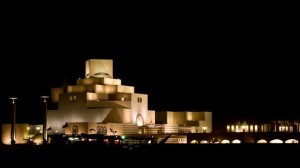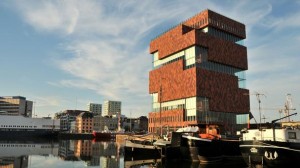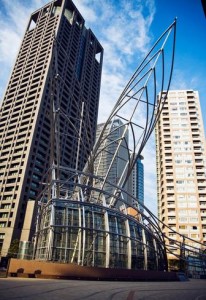Museum of Islamic Art: Doha, Qatar
IM Pei toured the Muslim world for inspiration and wound up creating a museum that is beautiful in its simple, dynamic design, which echoes traditional Islamic architecture. The pale sand-colour stone blocks form a five-story tower that casts long shadows once night falls. A row of palm trees and a waterfall feature lead to the entrance of the museum — built on a private, man-made island on the harbour.
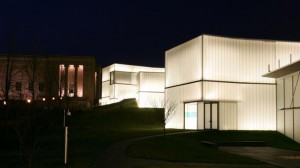 The original limestone building, with its Ionic columns and grand, almost temple-like Neoclassical design, dates back to the 1930s. In 2007, the museum got a renovation and a modern extension: a series of five cubes or “lenses” made of clear and translucent glass designed by Steven Holl. The lenses are integrated with the surrounding landscape, following the slope of the lawn, and they are a dramatic, yet complementary counterpoint.
The original limestone building, with its Ionic columns and grand, almost temple-like Neoclassical design, dates back to the 1930s. In 2007, the museum got a renovation and a modern extension: a series of five cubes or “lenses” made of clear and translucent glass designed by Steven Holl. The lenses are integrated with the surrounding landscape, following the slope of the lawn, and they are a dramatic, yet complementary counterpoint.
Architects Neutelings and Riedijk alternated between red sandstone from India and glass panes to give this riverfront museum a distinctive look that is modern even as it recalls the 16th-century storehouses used in Antwerp’s old port. The connection to the city is in the details as well: if you look closely at the 203ft-tall building, you will see 3, 185 silver hands, the symbol of Antwerp.
While much of this museum is subterranean, its visible steel and glass exterior makes a bold impression, curving skyward up to 170ft. Award-winning architect César Pelli wanted to mimic bamboo reeds waving in the wind, though his creation also gets compared to a set of wings. The play of the light filtered into the lobby provides an ever-changing feel to the interior gallery space.
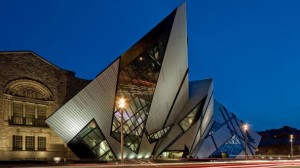 Local architects Darling and Pearson unveiled the original Italianate Neo-Romanesque museum building in 1914. A few renovations and additions followed, but things got controversial with the 2007 debut of The Crystal. The museum’s gem collection inspired Daniel Libeskind’s deconstructionist design of five interlocking prisms made of steel beams, aluminium and glass. Some were appalled, while others applauded the building’s daring departure from the norm.
Local architects Darling and Pearson unveiled the original Italianate Neo-Romanesque museum building in 1914. A few renovations and additions followed, but things got controversial with the 2007 debut of The Crystal. The museum’s gem collection inspired Daniel Libeskind’s deconstructionist design of five interlocking prisms made of steel beams, aluminium and glass. Some were appalled, while others applauded the building’s daring departure from the norm.
26 Oct 2011
